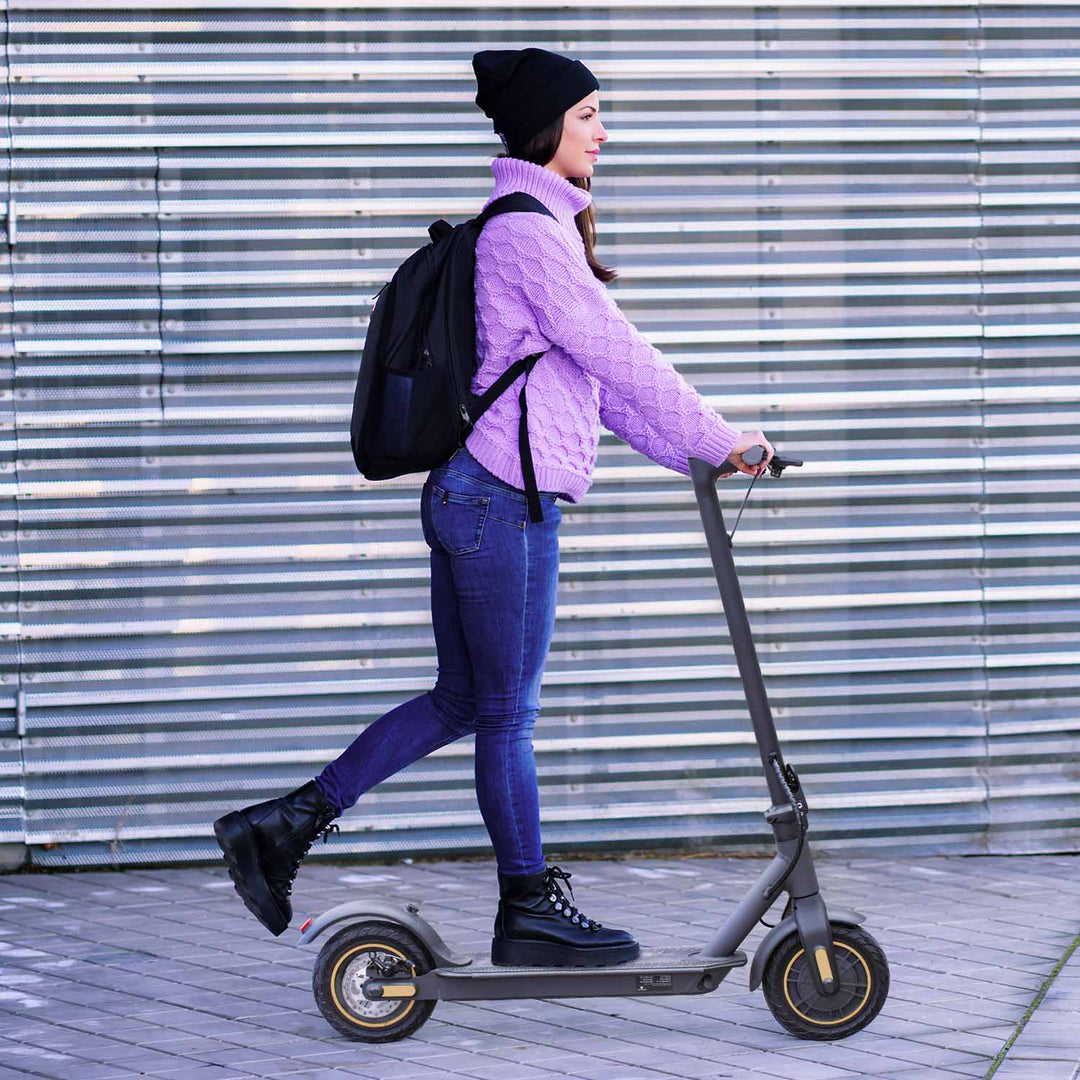What Are the Pros and Cons of E-Bikes Compared to Cars or Motorcycles?
Table of Contents
What are the pros and cons of using an electric bike compared to other modes of transportation like cars or motorcycles?
As a cycling enthusiast, I can compare electric bikes to other modes of transportation like cars and motorcycles. Based on my experience, here are some pros and cons:

E-Bikes:Pros and Cons
Pros of Electric Bikes:
- Environmental impact: Unlike gas-powered vehicles, e-bikes produce zero tailpipe emissions. A study by the University of California, Riverside, found that e-bikes can significantly reduce greenhouse gas emissions in urban areas, especially for short trips.
-
Cost-effectiveness: Electric bikes are cheaper to buy and maintain than cars or motorcycles. My SuperFun electric bike is just over $700. And, the charging cost is negligible compared to the fuel expenses of a car.
In the US, the average cost of electricity to charge an e-bike battery is around $0.05 per charge, which can take you up to 30 miles, depending on the model. In contrast, the average cost of filling a gas tank can be over $50.
-
Health benefits: Unlike cars, electric bikes encourage physical activity while providing assistance.A Dutch study published in the journal "Preventive Medicine" found that e-bike users cycled more frequently than traditional cyclists, potentially leading to improved cardiovascular health and overall fitness.

- Parking convenience: Finding parking in crowded cities can be a nightmare for cars and motorcycles. E-bikes can utilize bike racks readily available in most urban areas, saving time and frustration.
- Traffic navigation: E-bikes can often navigate through bike lanes and designated cycling paths, bypassing congested traffic jams that plague cars and motorcycles. For example, a study by the City of Portland, Oregon, showed that cyclists using dedicated bike lanes reached their destinations faster than cars during rush hour.
-
Low noise pollution: E-bikes operate quietly compared to gas-powered vehicles. This contributes to a more peaceful and pleasant urban environment.
A report by the World Health Organization (WHO) highlights the negative health impacts of noise pollution, making e-bikes a valuable tool for reducing noise levels in cities.
-
Convenience: Operating an e-bike is much simpler than a motorcycle, requiring less balance and control. Additionally, many areas allow e-bike use without a driver's license, making them accessible to a wider range of users.

Disadvantages of Electric Bikes
- Range limitations: While improving, e-bikes typically have a shorter range compared to cars and motorcycles. The average e-bike can travel 20-50 miles on a single charge, limiting their suitability for long-distance journeys. For example, a road trip from Los Angeles to San Francisco (around 380 miles) wouldn't be feasible with an e-bike.
- Weather exposure: Unlike cars, e-bike riders are exposed to the elements, rain or shine. This can be a major drawback in areas with harsh weather conditions.
- Cargo capacity: E-bikes have limited storage space compared to cars and motorcycles. Carrying groceries, luggage, or large equipment can be challenging with an e-bike. While some models offer cargo trailers or racks, they may not be practical for all situations.
- Speed limits: E-bikes are generally slower than cars and motorcycles, especially on highways. Their speed limitations can make long commutes or traveling on high-speed roads impractical.
- Safety concerns: E-bikes offer less protection for riders in the event of an accident compared to enclosed vehicles. Wearing a helmet and following safe riding practices are crucial for e-bike users.
- Battery life: E-bike batteries need to be charged regularly and eventually replaced, adding an ongoing cost. Battery life can also be affected by factors like weather and usage patterns.
- Limited passenger capacity: Most e-bikes can only accommodate one rider, or sometimes a passenger on a rear seat with limited legroom. My Super D1 E-bike is a good example. This limits their practicality for transporting families or groups.

Cars: A Closer Look at Benefits and Drawbacks
Pros of Cars
-
Long-distance travel: Cars excel at conquering long distances. The average car in the United States can travel over 400 miles on a single tank of gas, making road trips and long commutes manageable. For instance, a car trip from Los Angeles to San Francisco (around 380 miles) is easily achievable in a day.
-
Weather protection: Unlike bicycles or motorcycles, cars provide a protective shell from the elements. This makes them suitable for all weather conditions, rain, snow, or scorching sun. You can comfortably travel long distances without worrying about the weather impacting your journey.
-
Cargo capacity: Cars boast significant storage space. The average sedan trunk can hold 15 cubic feet of cargo, while larger SUVs can offer over 50 cubic feet. This allows for easy transportation of groceries, luggage, sports equipment, or even furniture. For example, you can comfortably pack for a week-long family vacation with ample space for everyone's belongings.
-
Passenger capacity: Cars are ideal for transporting multiple passengers. Most sedans can seat five people comfortably, while larger SUVs or minivans can accommodate seven or even eight passengers. This allows for family outings, road trips with friends, or carpooling to work, reducing the number of vehicles on the road.
-
High speeds: Cars can travel at significantly higher speeds than other alternatives like bicycles or e-bikes. Highway speeds typically range from 65 to 75 miles per hour, making long commutes or traveling between cities faster and more efficient.

Cons of Cars
-
Environmental impact: A major drawback of cars is their contribution to air pollution. According to the Environmental Protection Agency (EPA), cars and trucks are the largest source of transportation-related greenhouse gas emissions in the United States. These emissions can contribute to climate change and respiratory health problems.
-
Costly: Cars are expensive across their lifecycle. The initial purchase price can range from tens of thousands of dollars for a used car to over a hundred thousand for luxury models.
Additionally, ongoing costs like fuel, maintenance, insurance, and registration add up significantly. In the US, the average annual cost of owning a car can be over $8,500.
-
Parking challenges: Finding parking, especially in urban areas with limited space, can be a major headache. This can waste time and add frustration to your commute.
For instance, in a city like San Francisco, the average cost of hourly parking can be over $7, and finding a spot can take a significant amount of time.
-
Traffic congestion: The sheer number of cars on the road contributes heavily to traffic congestion, especially during peak hours. This can significantly increase travel times and reduce overall efficiency.
A study by the Texas A&M Transportation Institute found that traffic congestion costs the US economy over $100 billion annually in wasted time and fuel.

Motorcycles: Weighing the Advantages and Risks
Pros of Motorcycles
-
Relatively inexpensive: Compared to cars, motorcycles are generally cheaper to purchase and maintain. The initial cost of a new motorcycle can range from a few thousand dollars to upwards of $30,000 for high-performance models.
Still, this is significantly less than the average new car price, which is over $40,000 in the US. Additionally, motorcycle insurance premiums are typically lower than car insurance.
-
Fuel efficiency: Motorcycles generally boast superior fuel efficiency compared to cars. While fuel efficiency varies depending on the model, many motorcycles can achieve over 50 miles per gallon (MPG), whereas the average car in the US gets around 25 MPG.
This translates to significant fuel cost savings, especially for frequent riders. For example, a rider getting 70 MPG on a motorcycle would spend roughly half the amount on gas compared to someone driving a car that gets 25 MPG, assuming the same distance traveled.
-
Parking ease: Motorcycles are a dream come true in crowded urban areas with limited parking. Their smaller size allows riders to squeeze into tight spots or utilize designated motorcycle parking areas that wouldn't accommodate a car. This can save time and frustration when searching for parking, especially in busy city centers.
-
Maneuverability: Motorcycles excel at navigating through traffic congestion. Their compact size allows them to filter between lanes of stopped cars, significantly reducing commute times in heavily congested areas. For instance, a motorcycle rider in Los Angeles during rush hour might be able to weave through traffic, arriving at their destination much faster than someone stuck in a gridlocked lane of cars.
-
Faster than e-bikes: Motorcycles offer a significant speed advantage over e-bikes. Most motorcycles can reach highway speeds (typically 65-75 mph), making them a more practical option for longer commutes or traveling between cities compared to e-bikes with limited range and speed.

Cons of Motorcycles
-
Safety concerns: A major drawback of motorcycles is the lack of safety features compared to cars. Motorcycles offer minimal protection for riders in the event of an accident.
According to the National Highway Traffic Safety Administration (NHTSA), motorcyclists are 29 times more likely to be killed in a crash than passenger car occupants per vehicle mile traveled. This inherent risk is a major consideration for potential motorcycle riders.
-
Weather exposure: Similar to e-bikes, motorcycle riders are exposed to the elements, rain or shine. This can be uncomfortable and even dangerous in extreme weather conditions. Riding in cold or rainy weather can be unpleasant and potentially lead to hypothermia. Conversely, riding in scorching heat can cause dehydration and heat exhaustion.
-
Limited cargo capacity: Motorcycles offer limited storage space for cargo. While some models have saddlebags or trunks available, they generally can't compete with the trunk space of a car.
This makes them less practical for carrying groceries, luggage, or larger items. For instance, a motorcycle rider wouldn't be able to transport a week's worth of groceries for a family, unlike someone who can easily load everything into the trunk of a car.
-
Skill requirement: Operating a motorcycle safely requires more skill and training compared to driving a car or riding an e-bike. Taking a motorcycle safety course and obtaining a motorcycle license are essential for new riders to develop the necessary skills and knowledge to navigate the road safely.

Conclusion
In my experience, e-bikes are great for short- to medium-distance urban commuting and leisure riding. They combine convenience, exercise, and environmental friendliness. However, for long-distance travel or when carrying large items, cars and motorcycles still have their place.
Ultimately, the best choice depends on your individual needs and priorities. Consider factors like your budget, typical travel distances, weather conditions, cargo needs, and passenger requirements.
References
1.Quora:How much does it cost to charge an electric bike?
2.National Library of Medicine:A push for public health: the effect of e-bikes on physical activity levels
3.WHO:Noise
4.EPA:Sources of Greenhouse Gas Emissions
5.nerdwallet.com:What Is the Total Cost of Owning a Car?
6.On-Street Parking Pricing Policies
7.tti.tamu.edu:Traffic Problems Tied to the Economy, Study Says
8.nhtsa.gov:Motorcycle Safety








Leave a comment